
Apple orchard in Frederick County, 2002

Apple orchard in Frederick County, 2002
Modern apples grown in Virginia (Malus domestica) evolved in Central Asia and the Caucasus region as Malus sieversii. In Kazakhstan, the city of Alma Ata means "full of apples." They are not native to North America; only crabapple trees are native to Virginia. Travelers on the Silk Rod between Xian and Venice brought apple seeds to Europe. European settlers then brought seeds of different varieties to Virginia, and genetic diversity has increased here.
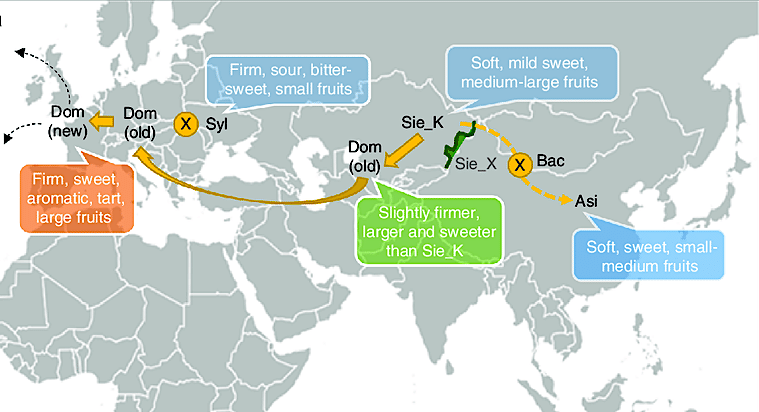
apples evolved in the Tian Shan Mountains of central Asia
Source: Nature Communications, Genome re-sequencing reveals the history of apple and supports a two-stage model for fruit enlargement (August 2017)
Apple trees will grow on slopes not suitable for crops such as corn and wheat. The Blue Ridge and the Shenandoah Valley in Virginia was the largest apple-growing region in the United States in the early 1800's.
Each farm typically had an orchard. That led to a wide diversity in types of apples, and at the start of the 20th Century commercial orchards grew about 14,000 varieties of apples. A century later at the start of the 21st Century, commercial orchards grew less than 100 varieties. Improved transportation networks facilitated shipping, and led to consolidation of the industry. Roughly 90% of apples sold in stores came from just 11 varieties.1
High costs of labor and imported apple juice from China made commercial production uneconomic, starting particularly in the 1980's.
Today, the Bowman Andros plant in the Shenandoah Valley still processes Virginia-grown apples. The privately held French-based company, which has 30 plants worldwide, operates three plants at Mount Jackson that produces primarily applesauce snacks for children. In 2019, the company announced plans to replace Plant #3 and build a new facility next to it, upgrading capacity to convert apples into packaged food.2
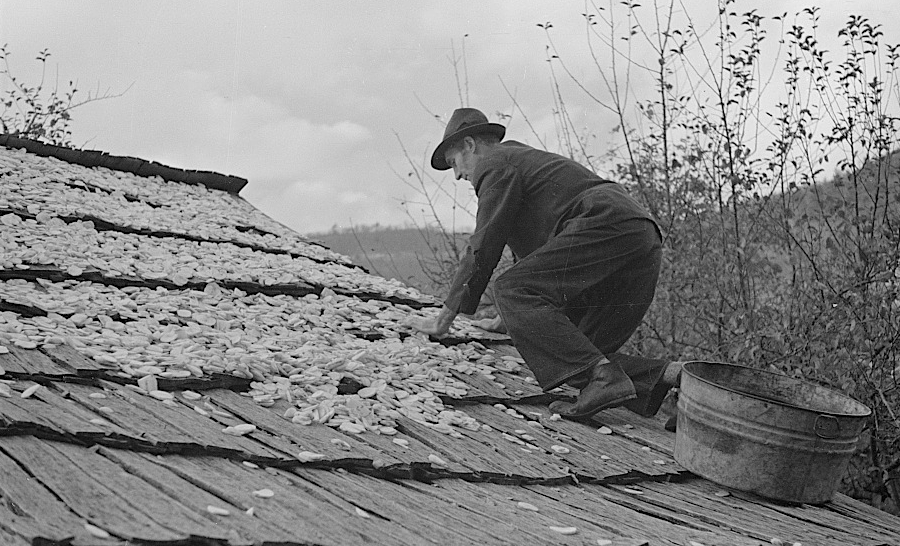
in the 1930's, Blue Ridge residents grew apples on hillsides with thin soil and dried them for storage
Source: Library of Congress, Drying apples, one of the few sources of income for the mountain folk, Shenandoah National Park, Virginia (by Arthur Rothstein, 1935)
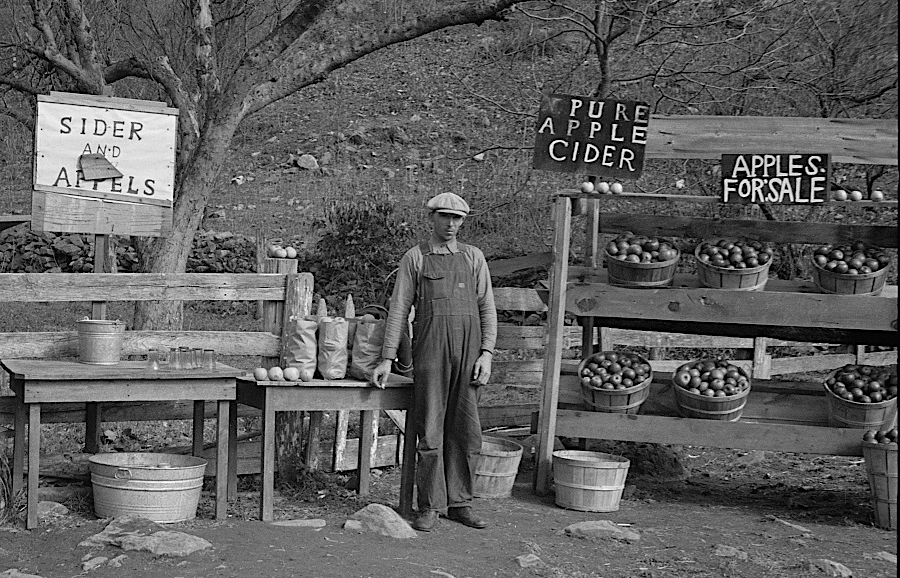
selling apple products at a roadside stand to tourists in the 1930's
Source: Library of Congress, A cider and apple stand on the Lee Highway, Shenandoah National Park, Virginia (by Arthur Rothstein, 1935)
Apples around Winchester are harvested by migrant workers, including some from Jamaica with H-2A visas. They are housed in September-October in a camp operated by the Frederick County Fruit Growers Association. From there, workers are bussed to different orchards to pick apples.3
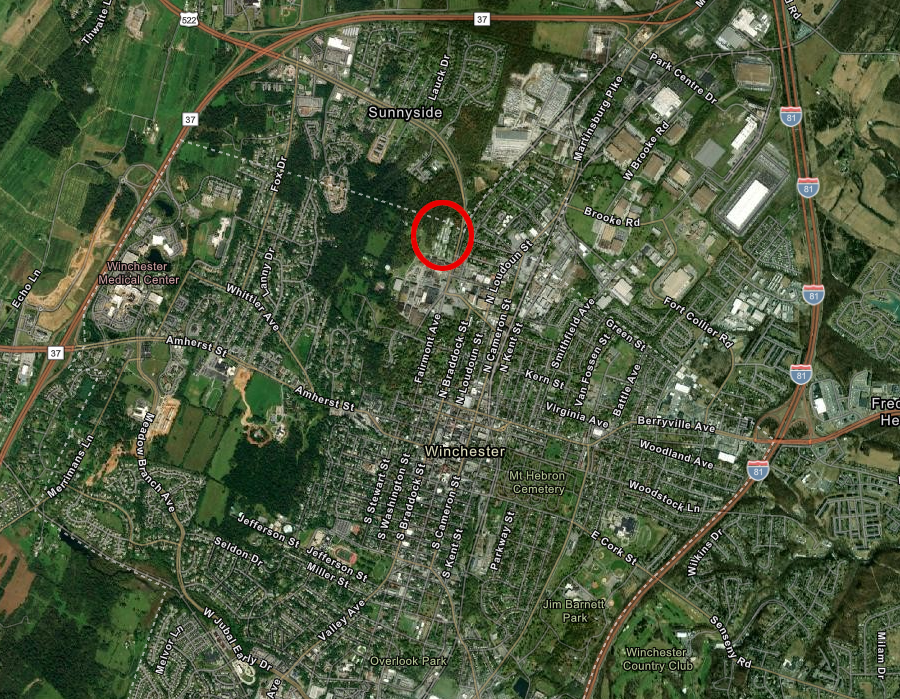
the Frederick County Fruit Growers Association operates a camp to house migrant workers who pick apples
Source: ESRI, ArcGIS Online
Today here are about 7,500 varieties of apples. Agricultural researchers have sought to preserve and expand the genetic diversity in dedicated orchards. The Plant Genetic Resources Unit of the US Department of Agriculture maintains the Apple, Grape, and Tart Cherry Germplasm Collection at Geneva, New York.4
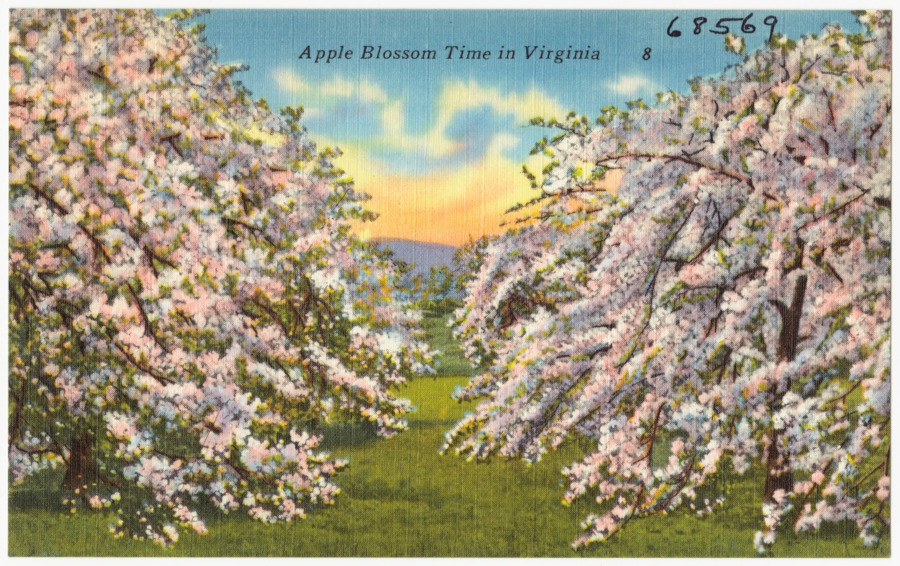
apples have been a major crop in mountainous areas where row crops were not feasible
Source: Boston Public Library, Tichnor Brothers Postcard Collection, Apple blossom time in Virginia

Apples in Frederick County, 2002